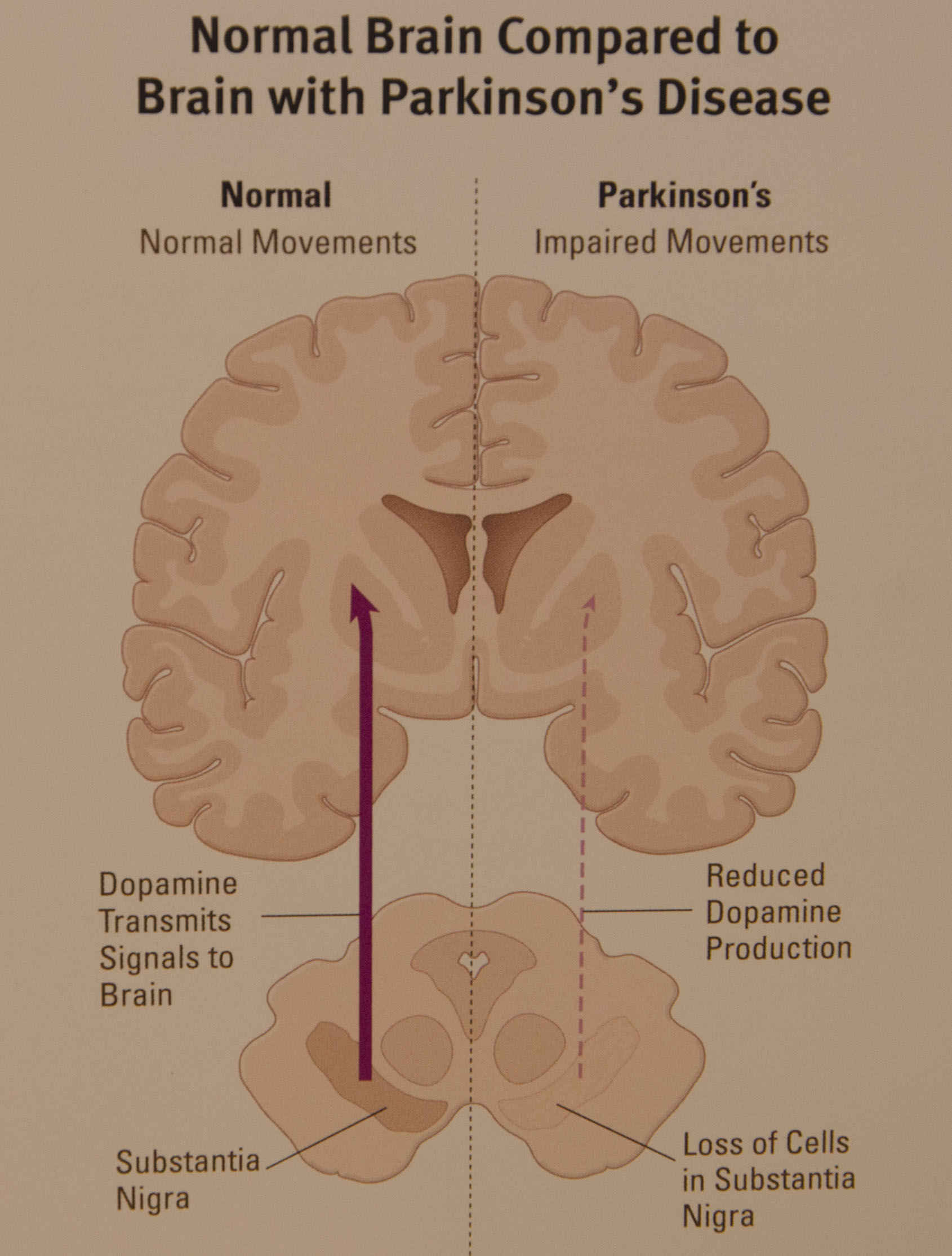
What is Parkinson’s Disease?
Parkinson’s disease (PD) is a movement disorder. In people with PD, a vital chemical in the brain called dopamine is gradually reduced. This brings on symptoms of tremor, slowness in movement, stiff limbs, and walking or balance problems. PD progresses slowly. Many treatments can reduce the symptoms and improve quality of life. PD is common. Each year about 50,000 people are diagnosed with PD. An estimated 4 million to 6 million people worldwide have the disease.
What Causes Parkinson’s Disease?
The cause of PD is still unknown. Researchers think that both genes and environment may play a role. The disorder is due to a loss of nerve cells in an area deep within the brain called the substantia nigra. This area produces the chemical dopamine. Dopamine helps send signals within the brain. Without the right amount of dopamine, movement can be impaired.
What Are the Symptoms?
The main symptoms of PD are:
- Rigidity or stiffness, in arms and legs
- Tremor that is often most noticeable when the affected limb is at rest
- Poor balance and coordination
- Bradykinesia, or slowness in starting movement, which may lead to less facial expression, changes in speaking and voice quality, shuffling gait, smaller handwriting, or trouble with fine finger movements, such as buttoning a shirt.
Symptoms vary from person to person. They usually appear gradually.
How is Parkinson’s Disease Diagnosed?
No laboratory test or brain scan can definitely diagnose PD. Your physician will make a diagnosis based on all of your symptoms and your neurologic examination. It is vital to be diagnosed by a physician experienced in treating the disorder. Neurologists are physicians who can make a diagnosis.
What Are the Treatment Options?
Much research is currently focused on finding treatment that slow or stop PD. Although no medication currently exists that can do this, treatments are available to help you maximize your functioning. The treatments available today have proven to relieve bothersome symptoms of the disease and improve everyday function. There is no standard or “best” treatment for PD. People can have a range of symptoms. You will need to work with your neurologist to find the treatment that is the best fit for your needs.
Medications
No currently available medication has been adequately proven to slow the progression of PD. But many medications can control symptoms. A neurologist will prescribe medications to manage your symptoms, but it may take time and patience to identify the medicine or dosage that works best for you. These mediations include milder drugs such as selegiline, rasagiline, and amantadine. More potent drugs include levodopa and the dopamine agonists, including pramipexole and ropinirole. Some medicines are used in combination with levodopa. These include rasagiline, selegiline, entacapone, and tolcapone. Side effects can also occur. Some drugs may cause changes in behavior, such as obsessive gambling or shopping. Changing the dosage or discontinuing certain drugs usually improves these side effects. Because PD can change over time, it is important to have regular evaluations so that medications can be adjusted to address changing symptoms.
Deep Brain Stimulation
The main non-drug treatment for PD is deep brain stimulation. Tiny electrodes are surgically implanted in the brain. The electrodes are connected to a small control unit implanted under the skin in the upper chest. Deep brain stimulation is an option for only about 10 percent to 20 percent of people with PD. Your neurologist can tell you if this treatment might be helpful for you.
In addition to movement problems, PD can affect other functions. Some people experience problems with depression, anxiety, apathy, memory, hallucinations, sleep, pain, speech drooling, urinating, or constipation. Treatments for these non-motor problems are available. Talk to your neurologist about any of these problems.
Living with Parkinson’s Disease
Many find that lifestyle changes can help control their symptoms. Eating a well-balanced diet helps maintain health and strength. Exercise has been shown to improve the symptoms of PD. It helps maintain muscle tone and strength and also improves mobility. Swimming and walking are especially helpful. Ask your physician to work with you to develop an exercise regimen. Eating healthy foods, staying active, and exercising can help you maintain a good quality of life.
Physical therapy may also be beneficial. For people who develop speech problems, speech therapy may be helpful.
Resource: American Academy of Neurology
